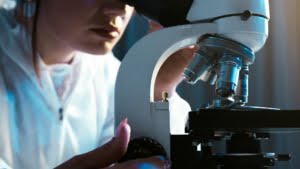
Lister Fellow Yogesh Kulathu and his colleagues at the University of Dundee have revealed an important mechanism for cellular health, reported in two recent Nature papers. Their study shows how cells control the production of proteins through a mechanism called UFMylation.
Proteins are present all over our cells, playing a vital role in keeping cellular processes ticking over. To stay well, we need a healthy repertoire of proteins in our cells, a state referred to as protein homeostasis.
Malfunctioning protein factories
Inside each cell, proteins are produced by ribosomes, tiny engines which translate genetic code into proteins. Ribosomes also cluster in the cell’s endoplasmic reticulum (ER), a folded structure that acts as a protein manufacturing site. Ribosomes can sometimes produce anomalous proteins that don’t function correctly, but fortunately the cell has its own ‘quality control’ system to keep this problem at bay. This quality control system works during the manufacturing process to identify malfunctioning ribosomes, clear away the faulty protein being made, and recycle the ribosomes.
The ER membrane is where a lot of cellular protein production takes place, but its structure and location make quality control especially tricky. Until recently, scientists didn’t understand exactly how its quality control process worked.
To investigate, Yogesh and his colleagues worked together with scientists from the University of Leeds. They focused on UFMylation, a process where a small protein called UFM1 is attached to ribosomes at the ER membrane. UFMylation seemed likely to have a quality control role – but how exactly did it work?
Watching UFMylation in action
The team set their sights on a structure called the UFM1 Ribosome E3 Ligase (UREL) complex, which is involved in UFMylation, using cryo electron microscopy techniques to reveal its mechanism in great clarity and detail. By watching UREL at work, they discovered two important roles it plays in cellular health.
Firstly, it modifies malfunctioning ribosomes, and ribosomes which have finished making a protein, with UFM1. This helps release stalled, malfunctioning ribosomes from the ER membrane, giving the quality control machinery access to work. Observing these functions, the team established that UFMylation is a highly important mechanism that helps cells maintain protein homeostasis.
A potential new treatment pathway
The UFMylation process is a potential new therapeutic target, since a number of individuals with mutations in this pathway develop neurodevelopmental disorders and other diseases linked to protein homeostasis.
“I am excited that we have answered a fundamental and long-standing question in biology revealing an essential step for quality control pathways to function at the ER. As mutations in this pathway cause neurodevelopmental disorders and skeletal abnormalities, we hope we can also begin to pave the way for new therapeutic approaches to help these patients,” Yogesh told us.



